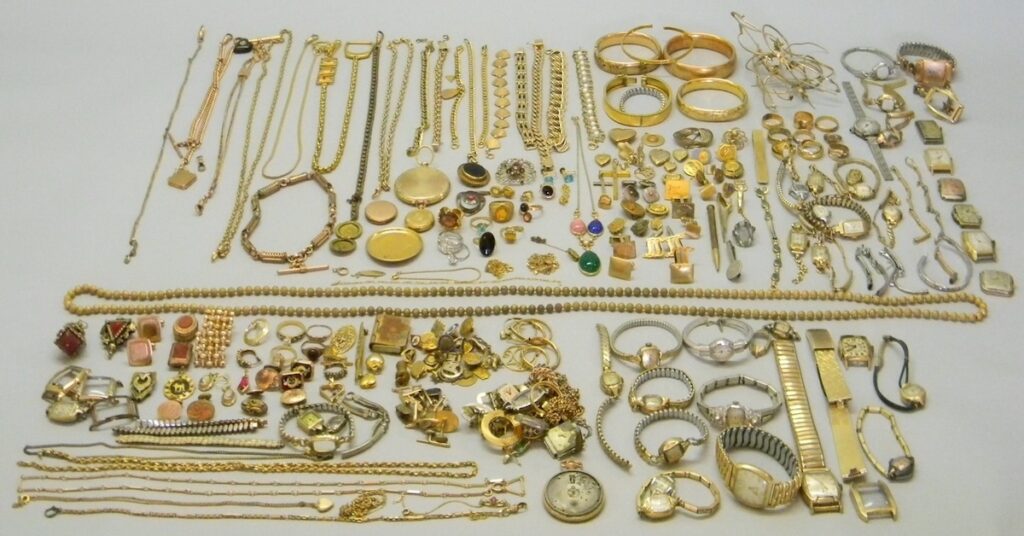Inheriting an estate is a deeply personal experience, often accompanied by mixed emotions—nostalgia, loss, and, sometimes, the practical matter of sorting through valuable items such as gold and silver. Whether it’s family jewelry, coins, or antique silverware, determining the value of these items is essential if you’re considering keeping, selling, or insuring them. One of the first steps in this process is getting a proper appraisal. But how do you navigate gold and silver appraisals? What factors should you consider, and how do you find an appraiser you can trust? Let’s break down the process, so you can confidently assess the value of your inherited treasures.

Why Gold and Silver Appraisals Matter
The value of inherited gold and silver extends beyond the metal’s worth. Appraisals serve several purposes, from helping you determine the current market value to ensuring the proper handling of valuable estate items. When multiple heirs are involved, knowing the exact value can help with the fair division of assets. Additionally, for insurance purposes, having an accurate appraisal ensures you are protected in case of loss or damage.
Establishing the fair market value of your gold or silver is crucial, especially as prices for precious metals fluctuate. An appraisal helps you understand whether the item’s value is increasing or decreasing and aids in making informed decisions regarding keeping or selling it.
Types of Gold and Silver Items to Appraise
When it comes to inherited gold and silver, the pieces can vary widely, and understanding what you have is the first step in the appraisal process. Some of the most common types of gold and silver items to appraise include jewelry, coins, bullion, and decorative pieces.
Gold and Silver Jewelry: Whether it’s a delicate necklace, vintage bracelet, or a family heirloom ring, jewelry is often one of the most prized inherited items. The appraisal of jewelry considers not only the metal content but also the craftsmanship, age, and any stones or adornments it might feature.
Coins and Bullion: Gold and silver coins, along with bullion bars, are usually appraised based on their weight and purity. Collectible coins with rare designs or historical significance may have an added value that exceeds the metal’s intrinsic worth.
Flatware and Decorative Items: Silver flatware, trays, and other household items are common in estates. The value of these items is typically determined by their weight, purity, and craftsmanship. Older, handcrafted pieces can carry higher value, especially if they come from renowned silversmiths or manufacturers.
The Appraisal Process
Appraising gold and silver involves more than simply weighing the items. A qualified appraiser will carefully assess various aspects of the pieces, such as their authenticity, condition, and potential market demand.
Finding a Qualified Appraiser: The first step is to find an experienced and certified appraiser. Look for professionals who are members of recognized organizations like the American Society of Appraisers (ASA) or the National Association of Jewelry Appraisers (NAJA). These certifications ensure that the appraiser adheres to ethical standards and has the expertise to accurately assess the value of your gold and silver.
What Happens During the Appraisal?: During the process, the appraiser will examine the piece physically and measure its weight and purity. For jewelry, they may also assess the design and maker’s mark. Appraisers use specialized tools to evaluate the metal’s purity, and they reference current market prices to determine the fair market value. They may also research the piece’s historical background or rarity if it’s a collectible item.
Written vs. Verbal Appraisals: Appraisals are typically provided in two forms: written and verbal. A written appraisal is more detailed and often required for insurance purposes or legal matters, while a verbal appraisal may be enough for a general idea of the item’s worth. If you plan to sell the item or use it as collateral, a written appraisal is usually the most beneficial.
Factors Affecting the Value of Gold and Silver
Several factors come into play when determining the value of your inherited gold and silver. These include the weight and purity of the metal, the rarity of the item, its condition, and the current market prices.
Weight and Purity: The most basic aspect of the valuation process is the weight of the gold or silver. Pure gold and silver are more valuable than alloys, so the appraiser will assess the metal content based on its purity, typically measured in karats (for gold) or percentage (for silver). Sterling silver, for example, is 92.5% pure, while 24-karat gold is considered pure gold.
Rarity and Collectibility: If the inherited item is a rare or limited-edition piece, it may be worth more than its raw metal value. Rare coins, especially those with historical significance, can command a premium. Similarly, vintage or antique jewelry pieces, especially those from well-known designers or brands, can have higher appraised values.
Condition and Craftsmanship: Condition plays a major role in the value of gold and silver. Tarnishing, scratches, and dents can decrease an item’s worth. In addition, items that are finely crafted or feature intricate designs are generally more valuable than mass-produced pieces. Artisanal or hand-made items, such as a hand-carved silver tray, may fetch a higher price compared to factory-made versions.
Market Prices: Gold and silver prices fluctuate daily based on market conditions. The global market can impact the value of your items significantly, so it’s essential to consider the current value of precious metals when determining your silver and gold appraisal.
Sentimental vs. Monetary Value
While the financial value of your inherited gold and silver is important, don’t forget about the sentimental worth these items may hold. Family heirlooms often carry emotional value that exceeds their monetary worth. Before deciding whether to keep or sell the items, take the time to reflect on their personal significance. In some cases, preserving the items for future generations may feel more meaningful than selling them for cash.
However, if selling becomes the preferred option—whether for financial reasons or simply because the items no longer hold personal significance—understanding their true value ensures that you receive a fair price.
Conclusion
Navigating gold and silver appraisals can feel overwhelming, but by understanding the key factors involved, you can make informed decisions about your inherited items. Start by ensuring your items are authentic and in good condition, and then work with a qualified appraiser to determine their true market value. Whether you decide to keep these items for their sentimental value or sell them for their financial worth, knowing what you have will help you make the best choice.
If you’re looking for expert help in evaluating your inherited gold and silver, DMK Metal is here to assist. Our team of experienced appraisers is ready to provide you with accurate valuations based on the latest market trends and industry knowledge. Contact us today to get started with a professional appraisal.
